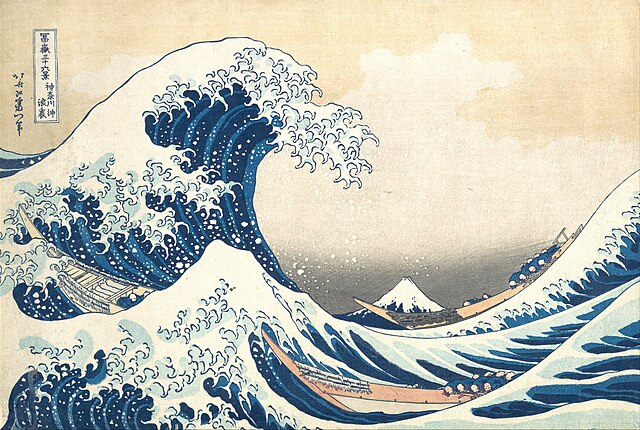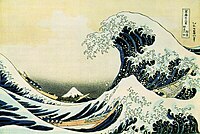KANAGAWA
On the high seas in Kanagawa • Under the wave

Great Wave off Kanagawa
The wave is generally described as that produced by a tsunami, a giant wave or more likely a rogue wave, but also as a monstrous or ghostly wave like a white skeleton threatening the fishermen with its "claws" of foam. This interpretation of the work recalls Hokusai's mastery of Japanese fantasy, which is evidenced by the ghosts in his Hokusai Manga. An examination of the wave on the left side reveals many more "claws" that are ready to seize the fishermen behind the white foam strip. This image recalls many of Hokusai's previous works, including his Hyaku Monogatari series One Hundred Ghost Stories, produced from 1831 to 1832, which more explicitly depicts supernatural themes. The wave's silhouette resembles that of a dragon, which the author frequently depicts, even on Mount Fuji.

Scary Version
The Japanese interpret The Great Wave off Kanagawa from right to left, emphasising the danger posed by the enormous wave. This is traditional for Japanese paintings, as Japanese script is also read from right to left. Analyzing the boats in the image, particularly that at the top, reveals the slender, tapering bow faces left, implying the Japanese interpretation is correct. The boats' appearances can also be analysed in Hokusai's print Sōshū Chōshi from the series Chie no umi ("Oceans of Wisdom"), in which the boat moves against the current in a rightward direction, as shown by the boat's wake.



